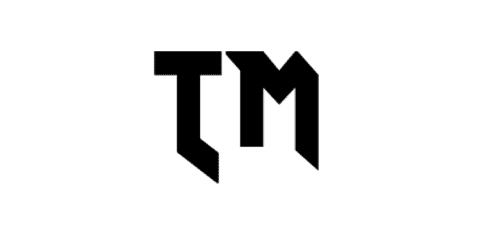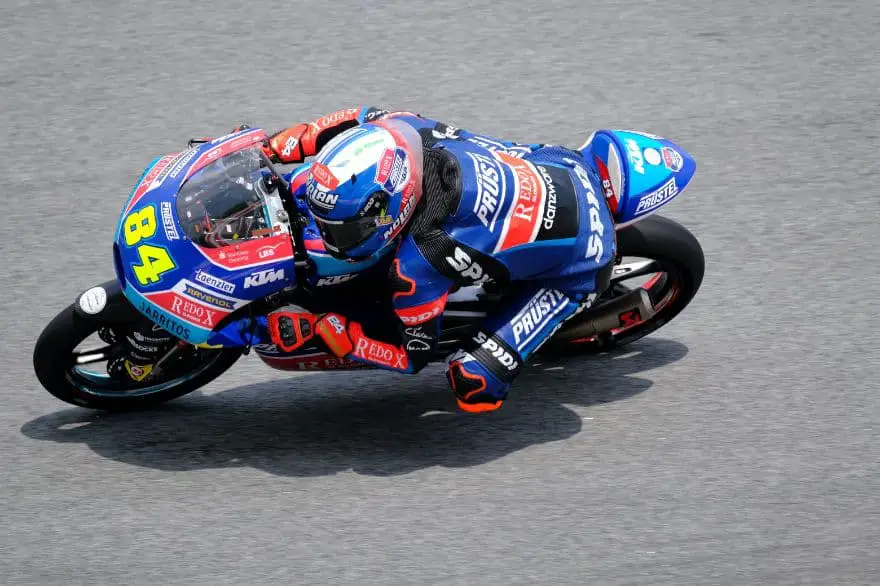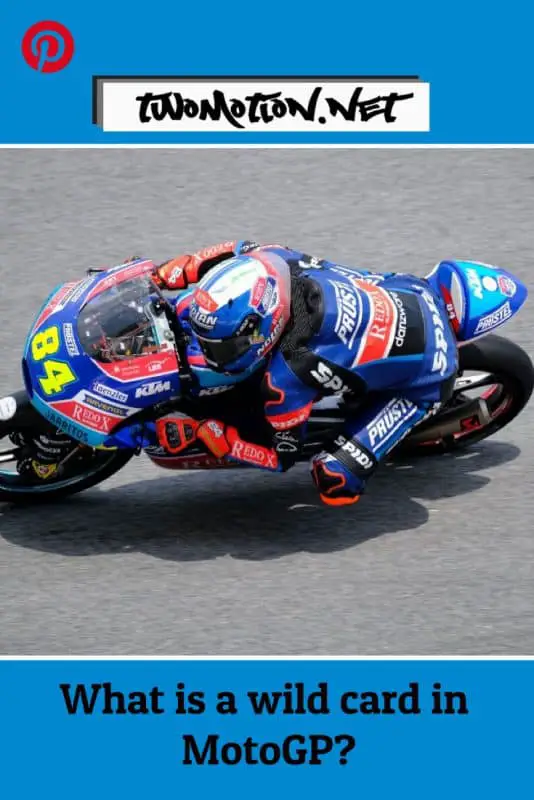A wild card in MotoGP is an opportunity for a non-contracted rider to participate in a specific MotoGP race event in the place of a contracted rider. A rider may be nominated by an FMN, the FIM, the MSMA or Dorna. A maximum of two riders will be allowed to participate as wild card riders in each MotoGP class event.
Overview
In this article, we discuss what a wild card or wild card rider is and some related questions. We also look at the conditions and procedures that need to be followed to become a wild card rider.
We will discuss the following:
- What is a wild card or wild card rider?
- Why does MotoGP have wild cards?
- How many wild card entries are allowed?
- Are wild card riders the same as substitute or replacement riders?
- Who chooses the wild card riders?
- Requirements and procedures for wild card riders
What is a wild card or wild card rider?
A wild card refers to an opportunity that is used to let a non-contracted rider (wild card rider) race in a MotoGP event. Wild cards are allowed in all MotoGP classes (MotoGP, Moto2 and Moto3), but the use of wild cards and their regulations may vary.
For example; a manufacturers team may use a wild card to have a new rider race for them with their bike in place of their usual rider that they contracted to race for them. This will usually only be for a single or few race events as wild cards are limited.
Why does MotoGP have wild cards?
Apparently, wildcards are used when a non-contracted rider might know a specific track or circuit better than other contracted riders and is given the chance to race in the event.
So in some cases, teams can benefit from using a wild card when the rider knows the specific track well. But not all wild card riders are new riders.
For example, after Jorge Lorenzo announced his retirement from MotoGP racing, he has made it clear that he is open to the possibility of returning as a wild card rider.
How many wild card entries are allowed?
It is not to say that every event will have wild card riders. There is a maximum but not a minimum.
The maximum number of wild card entries for each event varies on the MotoGP class. Below is a table with the number of entries for each class:
| Class | Total entries for an event | Team entries for the season |
|---|---|---|
| MotoGP | 2 | 6 |
| Moto2 | 2 | N/A |
| Moto3 | 2 | N/A |
Are wild card riders the same as substitute or replacement riders?
No, as far as I could make out, substitute and replacement riders do not count as wild card riders. Part of the reason is that riders have to apply long before the event takes place which would not make sense given that you would not know when or if a contracted rider will be injured.
Who chooses the wild card riders?
There are a few entities that can nominate a rider to be used as a wild card rider but only one entity will have the final say.
These entities can nominate a rider for a wild card:
- An FMN
- The FIM (Fédération Internationale de Motocyclisme)
- The MSMA (Motorcycle Sport Manufacturers Association)
- Dorna
The entity that makes the final decision is the Grand Prix Commission.
Requirements and procedures for wild card riders
A wild card rider in any class MotoGP race event must be a holder of an FIM “one event Grand Prix” licence issued on behalf of any FMN.
Furthermore, the rider wishing to participated as a wild card rider must apply;
- 90 days prior to the MotoGP class event.
- 45 days prior to the Moto2 or Moto3 class event.
Wild Card Technical Regulations:
- Each Wild Card entry is allowed a maximum of 3 engines
- Wild Card entries using machines from an MSMA manufacturer currently entered in the MotoGP class are subject to all technical regulations related to their specific manufacturer.
- Wild Card entries must comply with the current bodywork regulations
Final words
I might not be able to answer all your questions regarding wildcards in MotoGP, but I hope this helps or makes it seem less confusing. Be sure to check out my latest info products before you leave.
I always try to keep my articles interesting and informative. And I’m always thankful when they are shared on social media platforms or Pinterest.


